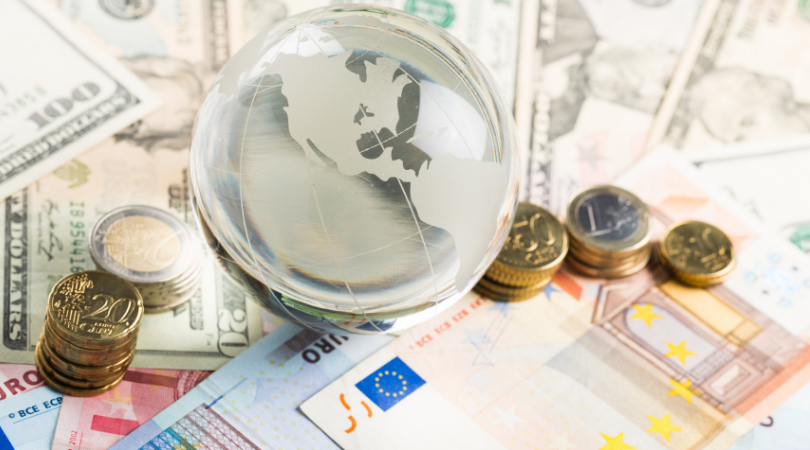Editor’s note: Rob Scott authors an important piece in the NY Times supporting CPA’s, and others, efforts to realign the dollar to balance trade.
Ms. Warren and Donald Trump agree on at least one thing: America’s currency problems are hurting workers.
[Robert E. Scott | June 16, 2019 | The NY Times]
Elizabeth Warren released an “American jobs” plan recently. It includes several trade and manufacturing policies intended to benefit American workers and companies. Wall Street responded with righteous indignation, which suggests she may have hit a nerve.
One element of her plan most likely explains Wall Street’s angry reaction: a call to tackle America’s overvalued dollar.
The novel idea that the United States could achieve greater domestic prosperity by revaluing the dollar sounds obscure and a little risky. Who would want to tinker with our currency?
The reality is that China and about 20 other nations are already doing so. By using public capital to purchase huge quantities of United States government securities over the past two decades, they have driven up the value of the dollar to make their own exports supercompetitive.
And it worked. Overseas currency manipulation by central governments made American exports more expensive all over the world. And it made products manufactured in China and other countries cheaper in comparison. It’s the primary reason America’s trade deficit soared over the last 20 years, wiping out almost five million manufacturing jobs, roughly 90,000 factories and the livelihood of thousands of the nation’s farmers.
Wall Street didn’t object to the dollar gaining value. It enabled a flood of cheap imports, and has driven huge profits for the companies that sell them, especially Walmart, Amazon, Nike and Apple. It also led to a reduction in wages for 80 million American workers competing with countries whose labor has been cheapened by these undervalued currencies.
Since 2014, the central governments of China and other currency manipulators have begun to reduce their purchases of United States securities. But the dollar is still rising, thanks to overseas investors now pouring huge amounts of private capital into bonds, stocks and controlling interests in American companies, as well as real estate, bank loans, bank deposits and currency.
These private purchases have driven up the real value of the dollar by more than 20 percent since mid-2014, continuing the trend of making American-made goods less competitive globally. As a result, the Congressional Budget Office predicts that America’s trade deficit is on track to exceed $700 billion by 2021, a full 3 percent of gross domestic product.
Wall Street remains unconcerned with these rising trade deficits. And that marks a true dividing line with Main Street. But revaluing the dollar could create two million to five million good-paying jobs, according to research by my organization, the Economic Policy Institute. And that could set off a much-needed economic revival.
What is standing in the way of such a change? Over the past decade, currency manipulation has become a bipartisan concern. In a 2008 campaign appearance, Barack Obama announced that, if China kept “manipulating” its currency, the United States would “start shutting off” market access. Similarly, Donald Trump promised in 2015 to declare Beijing a currency manipulator on Day 1 of his presidency. Neither one followed through, however, and meaningful action stalled in Washington.
But currency misalignment — driven by large flows of private foreign capital into the financial markets — is still lifting the dollar higher. And this misalignment is blunting the effect of President Trump’s China tariffs. Beijing has reduced the value of its currency by 9 percent in the last year, which has offset the president’s tariffs by lowering the cost of all of China’s exports.
The president gives lip service to complaints about the strong dollar. He says that China has given itself a “tremendous” competitive advantage by weakening its currency. But his administration, including Treasury Secretary Steven Mnuchin — a Goldman Sachs alum — and a team of Wall Street veterans, does nothing in response.
Several economists have estimated that the dollar must fall by roughly 27 percent in order to rebalance trade flows in three to five years. Such a revaluation is possible, however, and there are different means to accomplish this.
One option is federal intervention to buy foreign currency assets, which would address the misalignment driven by flows of overseas public and private capital. Or, the United States could impose a withholding tax on the profits and dividends earned by foreign investors, both public and private. The International Monetary Fund has already endorsed such “speed bumps” for developing countries seeking to restrict the inflow of foreign capital.
The executive branch could also negotiate directly with its trading partners to realign the dollar against competing currencies, a precedent set by previous Republican administrations. In 1971, President Richard Nixon imposed a 10 percent import surcharge that coerced allies into raising the value of their currencies. And in 1985, Congress passed tariff legislation that provided leverage for President Ronald Reagan to negotiate the Plaza Accord, yielding a 30 percent drop in the dollar’s value.
Whatever the approach — whether it’s Ms. Warren’s plan, or negotiation compelled by broader tariff threats — an overvalued dollar is now the primary drag on America’s global competitiveness. This currency problem has been ignored for too long, and it’s a growing problem for America’s workers and domestic industries. Wall Street’s self-interest should not be allowed to stand in the way of finally fixing it.
Robert E. Scott is a senior economist with the Economic Policy Institute Policy Center.
Read the original article here.
Leave your comments below, and if you could please share!













